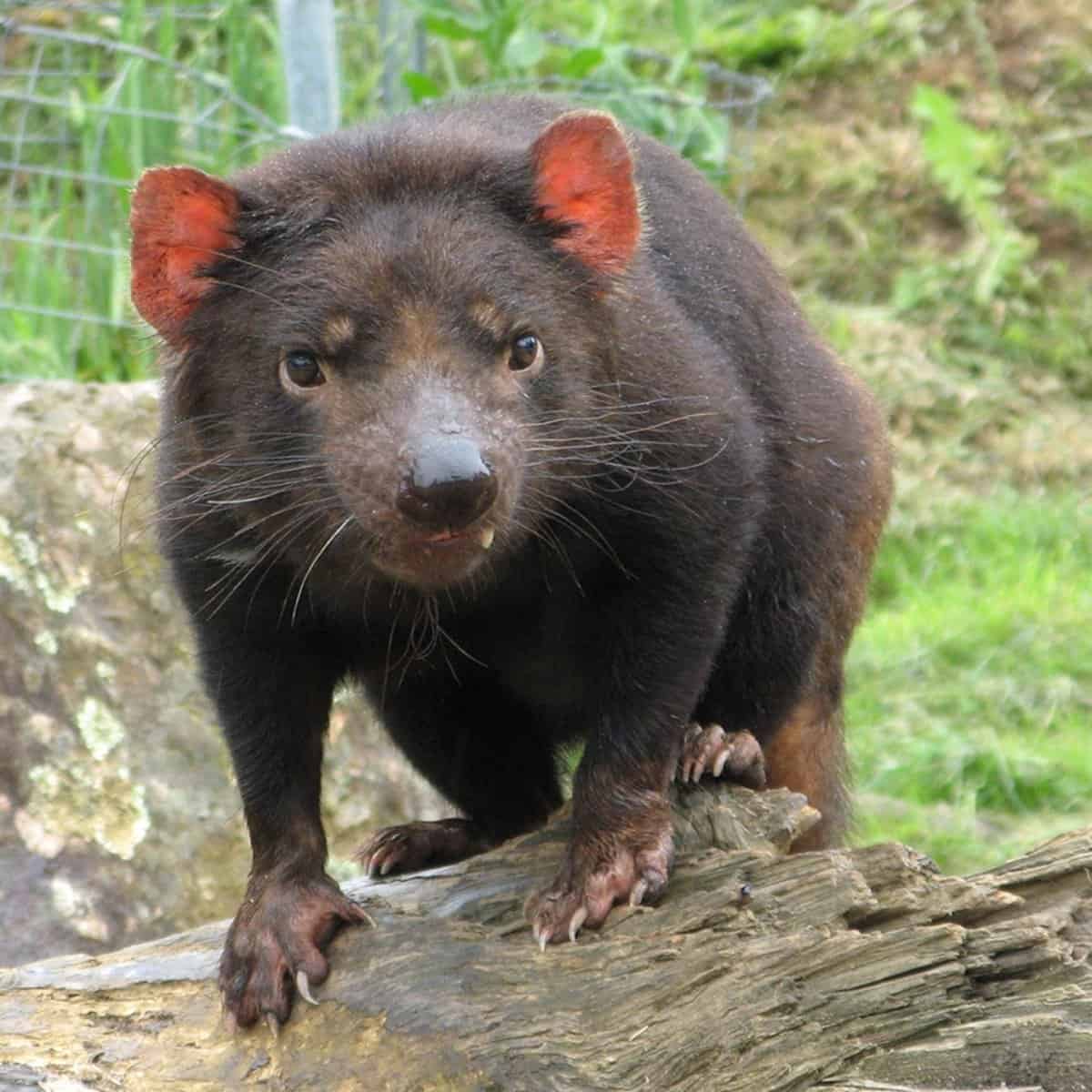Discover the Mystique of the Tasmanian Devil in Tasmania: A Family Guide
Welcome, fellow adventurers and curious families! Are you ready to embark on a wild escapade to unearth the secrets of the feisty Tasmanian Devil right in its homeland of Tasmania? Come along as we dive into the world of this remarkable creature — a journey that promises excitement, education, and ever-lasting memories for both you and your little explorers!
Introduction to Tasmania’s Most Famous Marsupial
Before we set out on our adventure across the Tasmanian wilderness, let’s get acquainted with our subject, shall we? The Tasmanian Devil (Sarcophilus harrisii) is a unique marsupial and the largest carnivorous one that, you guessed it, is native only to Tasmania. These intriguing creatures captivate with their robust build, sharp teeth, and their notorious nocturnal screams. Despite their fierce name and reputation, Tasmanian Devils play an essential role in the ecosystem, acting as both predator and scavenger.
Why the Tasmanian Devil is Important
As natural garbage cleaners, they keep the environment free of carrion and help control the spread of disease. Moreover, their existence is crucial for the biodiversity of Tasmania, making them a keystone species in their habitat. But these incredible animals are not just important ecologically — they’re also a symbol of Tasmanian wildlife and draw inquisitive travelers from all over the world.
Best Places to Spot Tasmanian Devils in the Wild
While these creatures can be somewhat elusive due to their nocturnal nature, there are certain spots on the island where chances of spotting a Tasmanian Devil are higher:
- Maria Island National Park – Known not only for its historical significance but also for its wildlife sanctuary, this park offers a peaceful environment where Tasmanian Devils have been introduced and thrive.
- Tasman Peninsula – Visit the Tasmanian Devil Unzoo, an innovative nature park that allows you to observe the animals in an environment that mirrors their natural habitat.
- Northwest Tasmania – The dense forests and national parks in this region provide a suitable backdrop for devil sightings, especially around dusk.
Remember, while you’re basking in the delight of these creatures, maintain a respectful distance — these are wild animals, after all.
Conservation Efforts: Protecting an Iconic Species
It’s not all frolicking and fun, as the Tasmanian Devil faces some harsh realities. A contagious cancer known as Devil Facial Tumour Disease (DFTD) has greatly impacted devil populations. But hope is far from lost! Conservation programs are in full swing, and by visiting certain conservation parks and sanctuaries, you’re contributing to the sustainability of this species.
Here’s how you can support conservation efforts during your family trip:
- Participate in a Tasmanian Devil night feeding tour — not only a thrilling experience but also an educational one.
- Adopt a Tasmanian Devil through a wildlife program — a meaningful way to get your kids involved in wildlife conservation.
- Practice responsible tourism by respecting the natural habitats of the Tasmanian Devil and adhering to park guidelines.
As we move through this guide, we’ll delve deeper into the mysterious life of the Tasmanian Devil, give you tips on how to make the most out of your Tasmanian wildlife adventure, and share invaluable insights on how to raise awareness and educate your youngsters about the significance of conservation.
So, clutch your binoculars, put on your adventure hats, and prepare to meet the enigmatic Tasmanian Devil up close and personal. In the next sections, we will cover what to pack for your eco-tour, fun Tasmanian Devil facts for your kids, and engaging activities to turn this trip into an immersive learning experience. Stay tuned for an expedition that will both enlighten and excite your entire family!

Five Essential Tips for Families Preparing for a Tasmanian Devil Encounter
If you’re planning a trip to Tasmania to see the fascinating Tasmanian Devils, there are a few essential tips that you should keep in mind to ensure a safe, enjoyable, and educational experience for your family:
-
Respect the Devil’s Natural Habitat
Understanding the importance of conservation starts with respecting the habitats we visit. Educate your children on the importance of not littering, staying on the marked paths, and following the regulations put in place by sanctuaries and national parks. This ensures the protection of Tasmanian Devils’ natural environment and contributes to the positive impact of eco-tourism.
-
Best Times for Devil Spotting
Timing is everything when trying to spot a Tasmanian Devil as they are most active in the early evening and throughout the night. Planning your visit around their active hours increases your chances of a sighting. Be prepared for some patience and silent observation, which can be a fun and suspenseful experience for kids.
-
Choose the Right Tour
Select a tour that is family-friendly and educational. Tours that provide knowledgeable guides enhance the experience by offering fascinating insights into the behaviors and characteristics of the Devils. These guided adventures can be an incredible practical educational tool for children, sparking a deeper interest in wildlife and conservation.
-
Pack Appropriately for the Adventure
Being in the Tasmanian wild requires appropriate gear. Make sure you have comfortable walking shoes, weather-appropriate clothing, and possibly some insect repellent to keep the bugs at bay. Don’t forget your camera and maybe a pair of binoculars for that perfect view of the Devils in their habitat!
-
Prepare for an Educational Experience
Prepare your children ahead of the trip by teaching them about the Tasmanian Devil. There are many resources available online, including videos and kid-friendly articles. This pre-visit education can help them appreciate the significance of what they’re experiencing, making the trip more than just a holiday but a learning adventure.
Remember, while the main attraction of your trip may be seeing the Tasmanian Devil in the wild, Tasmania offers a plethora of other incredible wildlife and natural beauty. Encourage your children to embrace the whole environment, observing the plants, birds, and other unique creatures they come across. This holistic approach will enrich your family’s experience and foster a greater appreciation for nature.
What to Pack for Your Eco-Tour
An outdoor adventure demands a carefully packed bag. When heading out to witness the Tasmanian Devils, add the following to your checklist:
- Layers of clothing to adapt to changing weather conditions
- Rain gear to stay dry during Tasmania’s unpredictable showers
- Sturdy walking shoes for comfortable treks
- Binoculars for up-close viewing without disturbing wildlife
- Eco-friendly sunscreen and bug spray to protect your skin
- A camera with a good zoom to capture memories from a respectful distance
- Reusable water bottles and snacks — preferably package-free to reduce waste
- A small, eco-friendly first-aid kit for any minor scrapes or injuries
- An informative book or guide on Tasmanian wildlife for spur-of-the-moment learning opportunities
Being well-prepared means your family can relax and fully immerse in the wonders of nature’s playground, creating joyous memories with the Tasmanian Devil as your elusive, enchanting host.
Fun Tasmanian Devil Facts for Your Kids
Every child loves a fascinating fact to share with friends and family, and the Tasmanian Devil doesn’t disappoint with its array of quirky traits. Here’s some bite-sized information to sprinkle onto your kids’ knowledge sandwiches:
- Though portrayed in cartoons as wild spinning creatures, real Tasmanian Devils cannot spin. However, they can run quite fast and are impressive swimmers!
- They have incredibly strong jaws and can crunch through bones, making them efficient at leaving a clean site after a meal.
- The growls and screams they emit at night aren’t signs of aggression; this is how they communicate with each other, especially during feeding.
- Baby Tasmanian Devils are called ‘joeys’ and are as tiny as a grain of rice when they are born.
- Despite their tough exterior, Tasmanian Devils are actually quite shy and would rather avoid confrontation if they can.
Sharing these tidbits can ignite curiosity in your children, encouraging them to learn more about these and other animals while nurturing a passion for the natural world.
Engaging Activities for an Immersive Learning Experience
Turn your trip into a hands-on educational experience with these family-friendly activities:
- Create a treasure hunt with clues related to local wildlife and history, ending with a ‘spot the Tasmanian Devil’ challenge.
- Encourage your kids to keep a nature journal, sketching creatures they see and jotting down their observations and questions.
- After visiting a sanctuary or park, ask your children to create a mini-presentation on their favorite facts about the Tasmanian Devil.
- Bring along field guides and make a game of identifying plants, birds, and other animals you encounter during your explorations.
- Engage with conservationists and park staff to learn more about the Devil and the efforts taken to save them; children can learn a lot by asking their own questions.
By planning ahead and incorporating these suggestions, your family’s journey to see the Tasmanian Devils will not only be enjoyable but also contribute to a lifetime of appreciation and understanding for these extraordinary creatures and the wild world they inhabit.
For more great fun click here. For more information see here
Disclaimer
The articles available via our website provide general information only and we strongly urge readers to exercise caution and conduct their own thorough research and fact-checking. The information presented should not be taken as absolute truth, and, to the maximum extent permitted by law, we will not be held liable for any inaccuracies or errors in the content. It is essential for individuals to independently verify and validate the information before making any decisions or taking any actions based on the articles.




